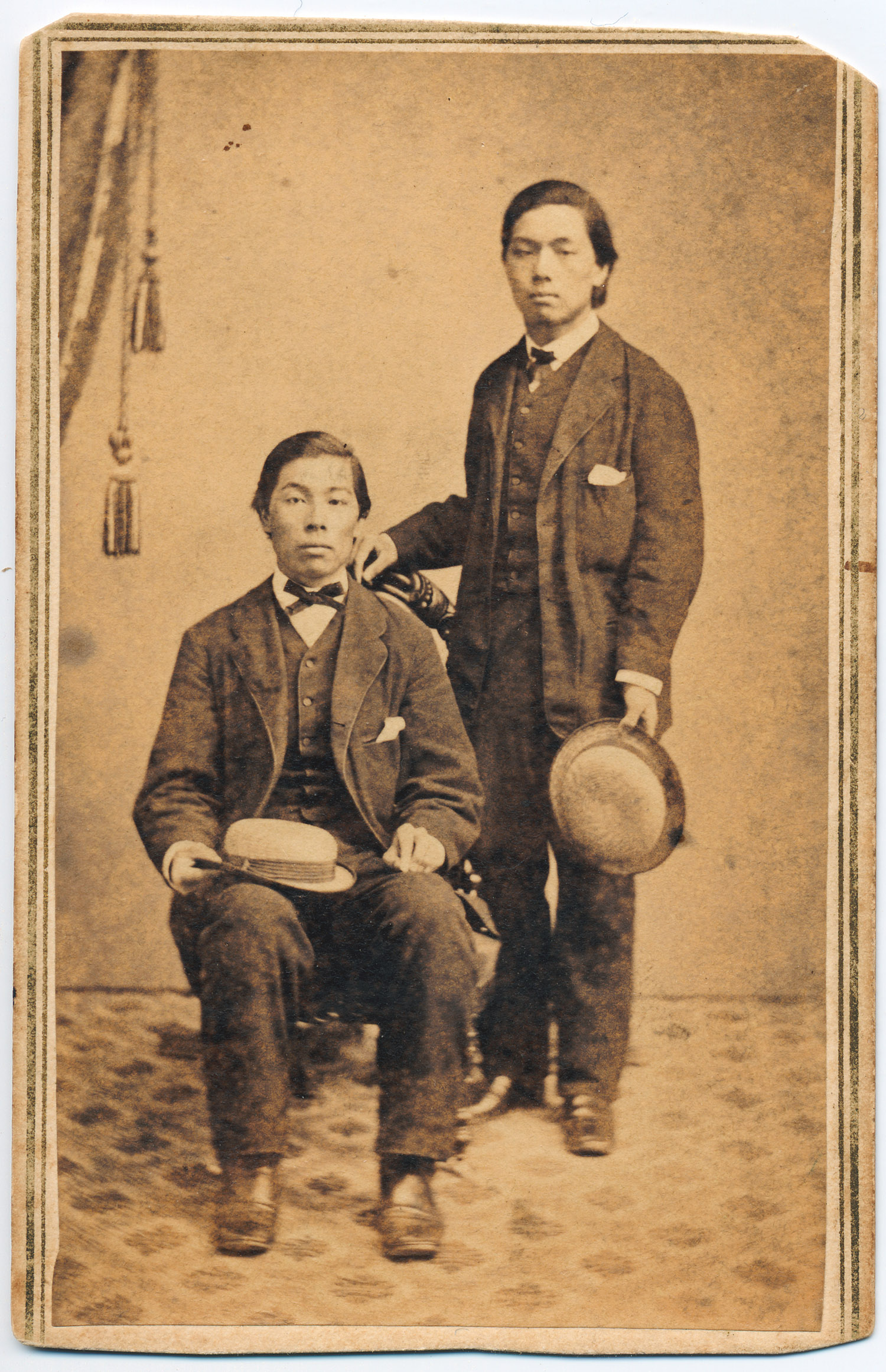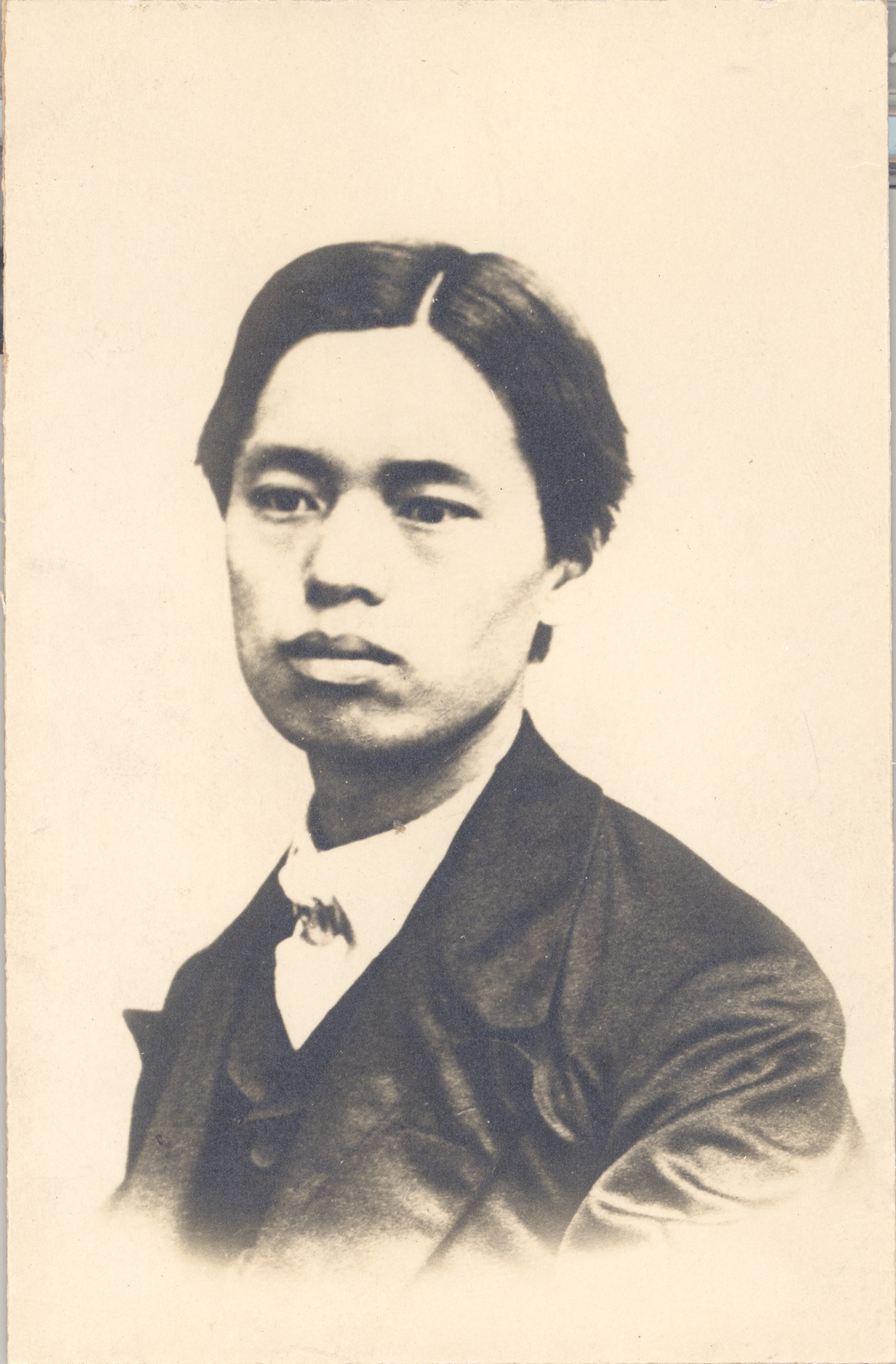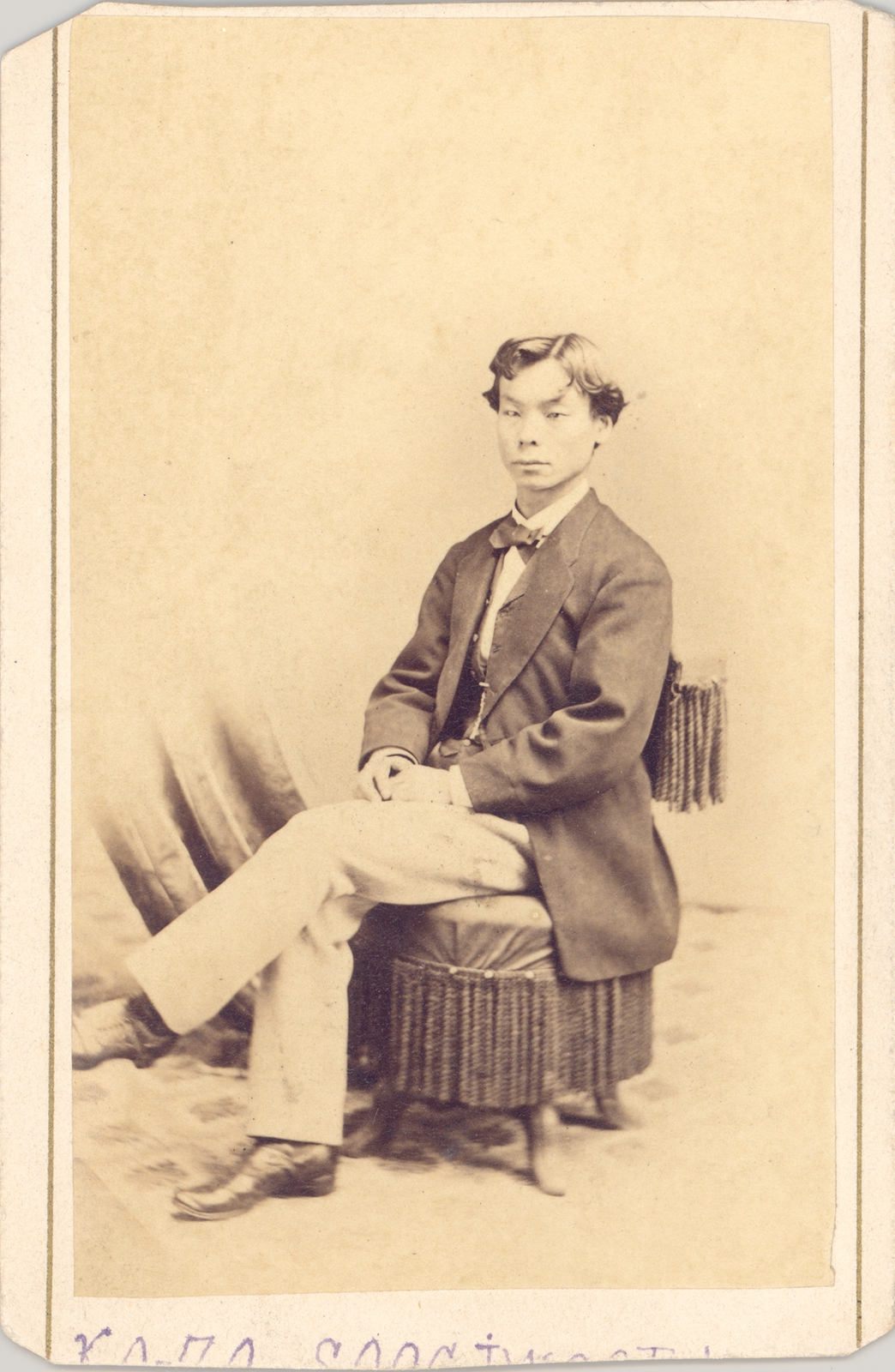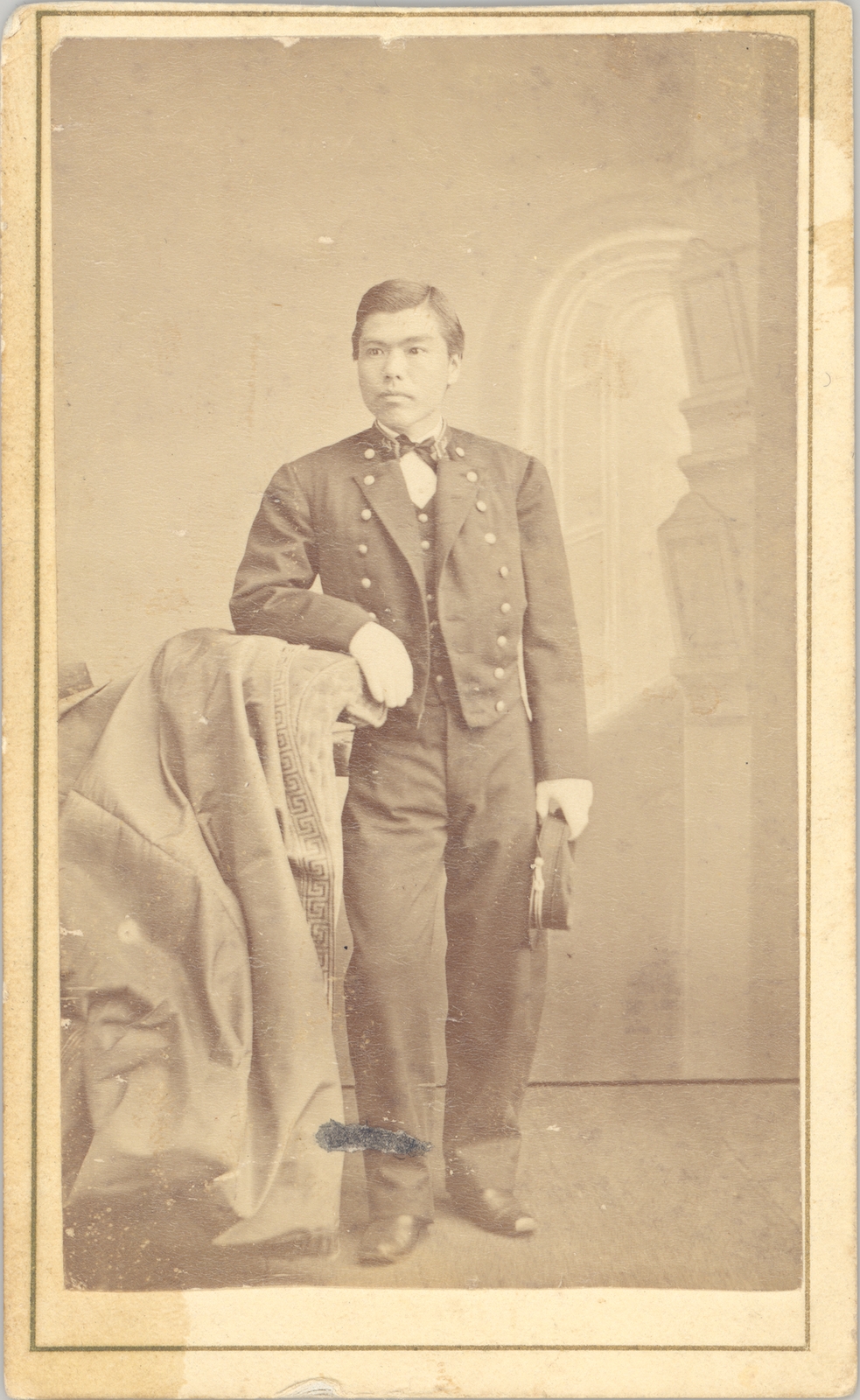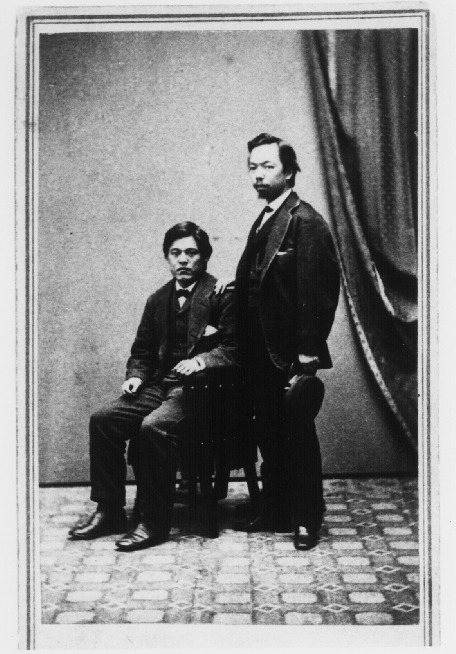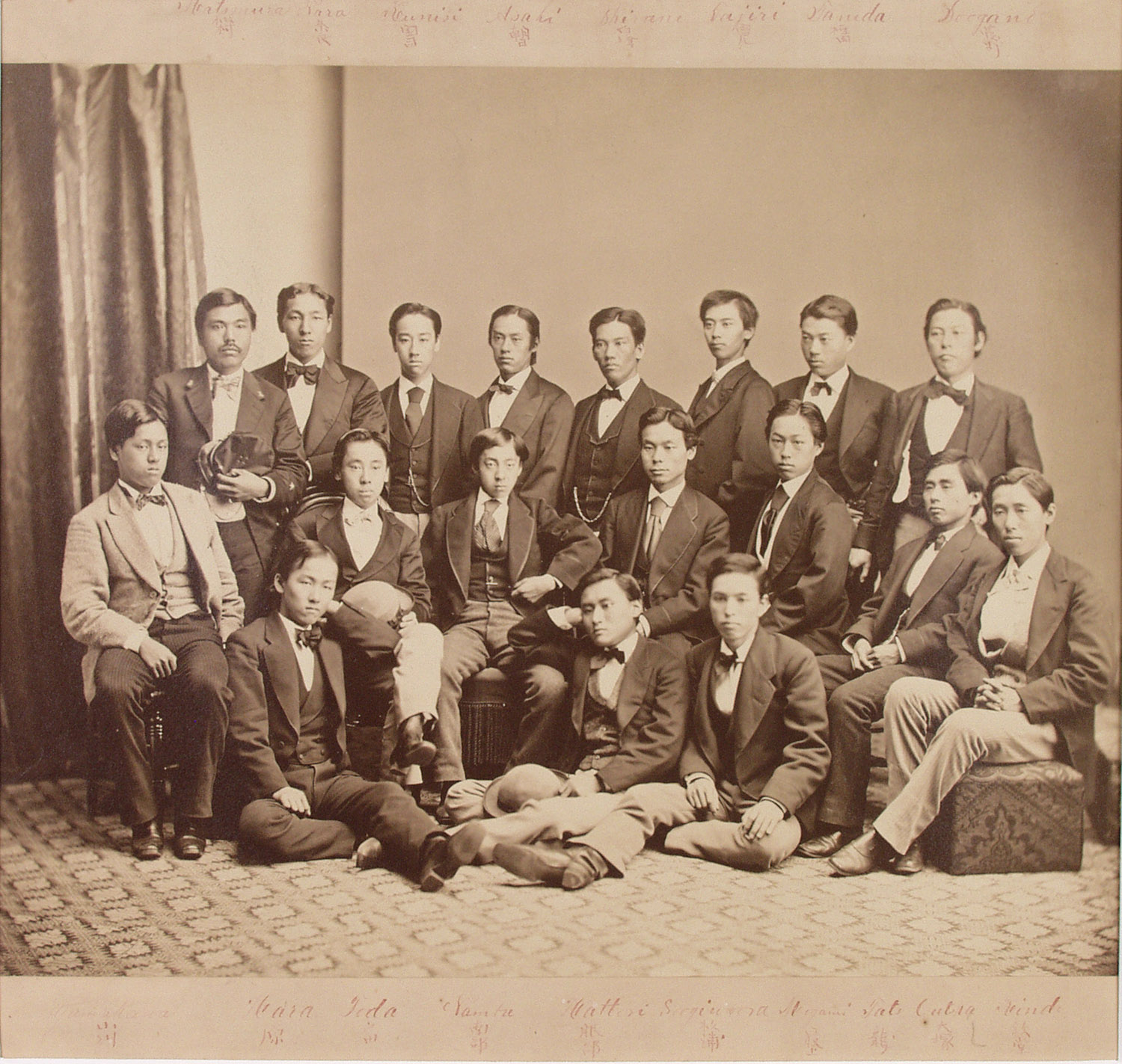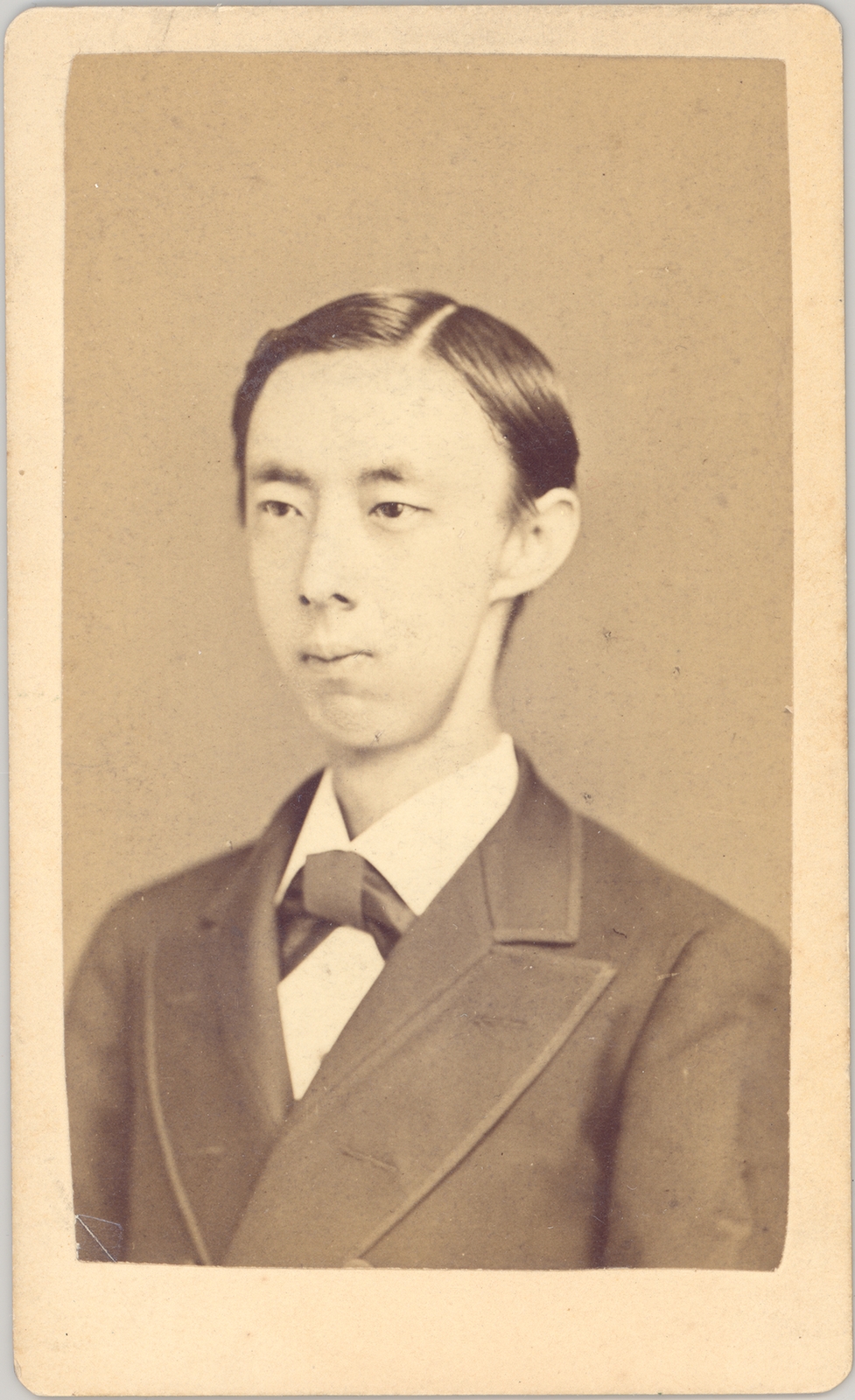Yokoi Saheita and Yokoi Daihei
The first Japanese students in New Brunswick were brothers Yokoi Saheita and Yokoi Daihei, who also went by the names Sataro Ise and Saburo Numagawa, respectively. Nephews of Yokoi Shonan, a scholar and political reformer during the early Meiji period, the Yokoi brothers had studied under Guido Verbeck in Nagasaki, Japan. They were able to secretly leave Japan in 1866 and study at the Rutgers Grammar School to work on their English and prepare for college. In 1869, Sataro Ise entered the Naval Academy in Annapolis, but would leave the Academy in 1872. Unfortunately, Saburo Numagawa would leave New Brunswick after contracting tuberculosis in 1869.
